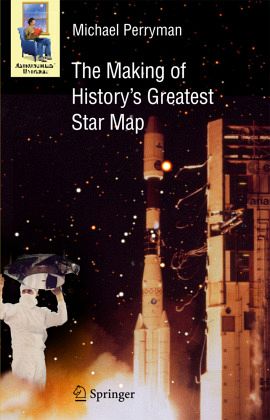Nicht lieferbar

The Making of History's Greatest Star Map
Versandkostenfrei!
Nicht lieferbar
Weitere Ausgaben:
The Hipparcos project was hugely important in mapping our Galaxy. Here is a fascinating account of an important episode in astronomy, written by the scientist who played a pivotal role that brought it to fruition, and eventually to a triumphant conclusion.
From prehistoric times, mankind has looked up at the night sky, and puzzled at the changing positions of the stars. How far away they are is a question that has confounded scientists for centuries. Over the last few hundred years, many scientific careers - and considerable resources - have been devoted to measuring their positions and motions with ever increasing accuracy. And in the last two decades of the 20th century, the European Space Agency developed and launched the Hipparcos satellite, around which this account revolves, to carry out these exacting measurements from space.
What has prompted these remarkable developments? Why have governments been persuaded to fund them? What are scientists learning from astronomy's equivalent of the Human Genome Project? This book traces the subject's history, explains why such enormous efforts are considered worthwhile, and interweaves these with a first-hand insight into the Hipparcos project, and how big science is conductedat an international level. The involvement of amateur astronomers, and the Hipparcos contributions to climate research, 'death stars' passing close to the Sun, and the search for extra-solar planets and even intelligent life itself, are some of the surprising facets of this unusual space mission.
What has prompted these remarkable developments? Why have governments been persuaded to fund them? What are scientists learning from astronomy's equivalent of the Human Genome Project? This book traces the subject's history, explains why such enormous efforts are considered worthwhile, and interweaves these with a first-hand insight into the Hipparcos project, and how big science is conductedat an international level. The involvement of amateur astronomers, and the Hipparcos contributions to climate research, 'death stars' passing close to the Sun, and the search for extra-solar planets and even intelligent life itself, are some of the surprising facets of this unusual space mission.




